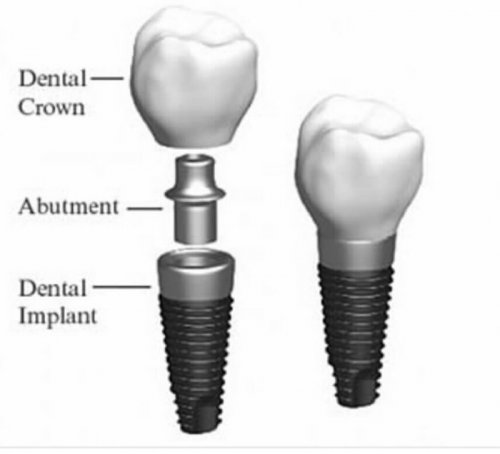Dental implants have become a vital and mandatory option for tooth replacement in recent years. While modern implant dentistry has seen major advancements in popularity and success, we must stress that not all dental implants are created equal, and no dental implants are guaranteed to last forever. However, using a high quality implant as well as a highly trained implant surgeon and restorative dentist, can make a big difference as to whether the implant will last for many years (and preferably a lifetime), which is always our goal.
The best way to ensure implant success is to use a high quality implant and to have the implant properly placed by a highly experienced dentist, or even better – an implant specialist and restored by a highly experienced restorative dentist. Oral surgeons and periodontists have extensive training and have also developed more predictable implant placement technique.
Low-budget implants have poorly designed screws (the portion of the implant that goes into the bone) or may move (even microscopically) when you chew. How an implant crown (the portion of the implant you see above the gumline, or the “tooth”) is made is also critical for the longevity of dental implant health in the bone.
Some of the things we look for in a high-quality implant system are:
1. They should have a very natural look and function just like real teeth.
- Strength and reliability of the bond between the abutment and the implant that provides support to the restoration or crown. This bond is so strong that they ultimately unite to form a single unit.
- They should be made from neutral titanium. It is accepted by the human body and therefore the chances of long-term success are increased.
- The implants are completely sterile and are opened only just before the implant placement begins. Your highly trained dentist or implant specialist and his assistant maintain sterile procedures as the implant is placed
- A great quality of the implants we prefer to place is a rough surface which means that it will fit perfectly and heals the new root easily. They are also designed to ensure a perfect fit after restoration and will bond with a patient’s jaw bone.
- The implant screw is designed so that the biting forces do not traumatize the surrounding bone.
- Implants can be customized for an individual patient’s needs and are selected by length and diameter especially for this patient.
- Ideally, implants should be placed around 2mm below the bone crest to get maximum benefits.
- The implants system we use in our office have tapered conical connectors to avoid a gap between the restoration and the implant. This keeps bacteria from collecting where the implant and abutment meet and prevent microscopic movements which over time would put strain on the implant and surrounding bone.




